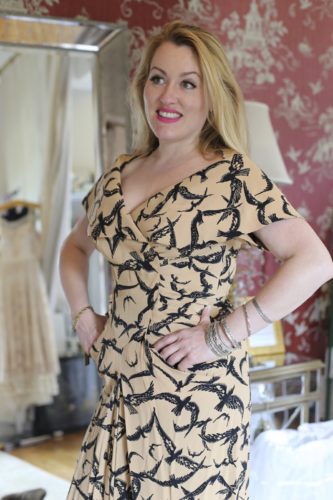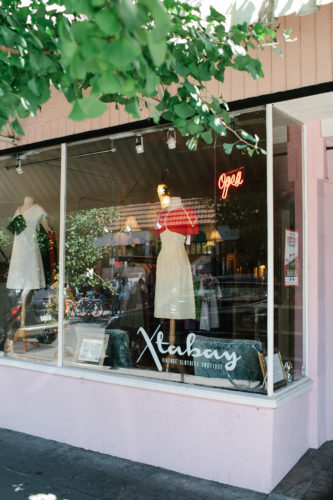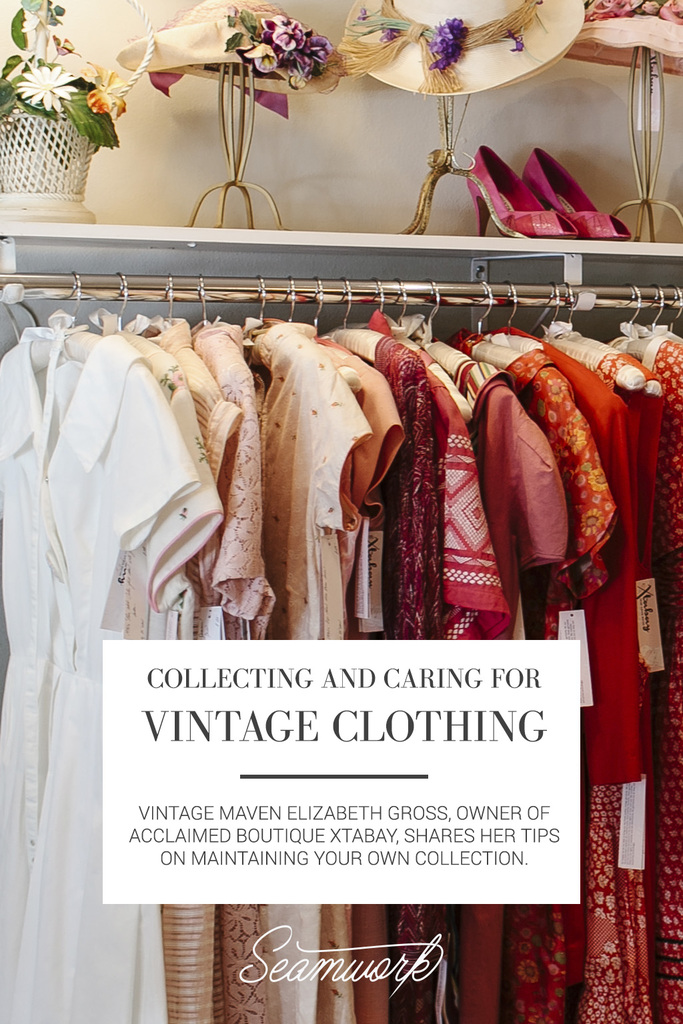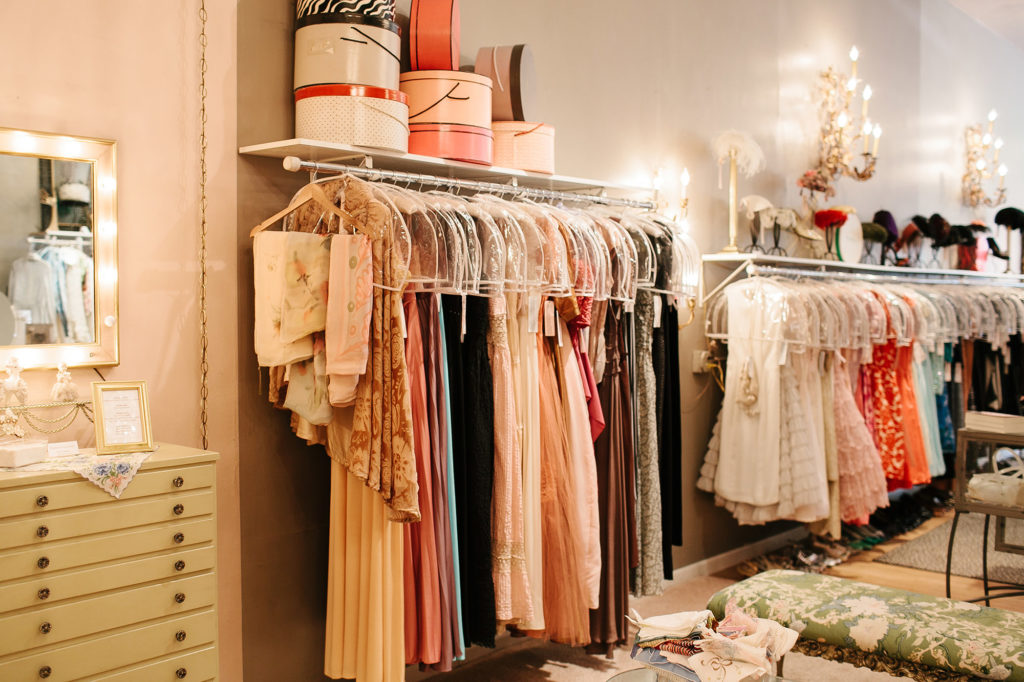
The first time I walked into Xtabay Boutique, I felt I'd entered a vintage nirvana. Decorated in soft colors with glowing light, the racks full of the most exquisitely beautiful dresses and coats, this is the type of store where you immediately feel the unique presence of the owner. Only someone who truly cares about vintage clothing and how they make a woman feel could create a space like this. It also takes someone with skill, know-how, and a discerning eye for detail.
That someone is Elizabeth Gross. Liz has been buying and selling vintage clothing from the age of 18, when she first discovered thrift shops like Value Village. "I could not believe what amazing, gorgeous things were there for very little money. Back then you could find vintage designer gowns for $4.99! It was a revelation and I started thrifting religiously."
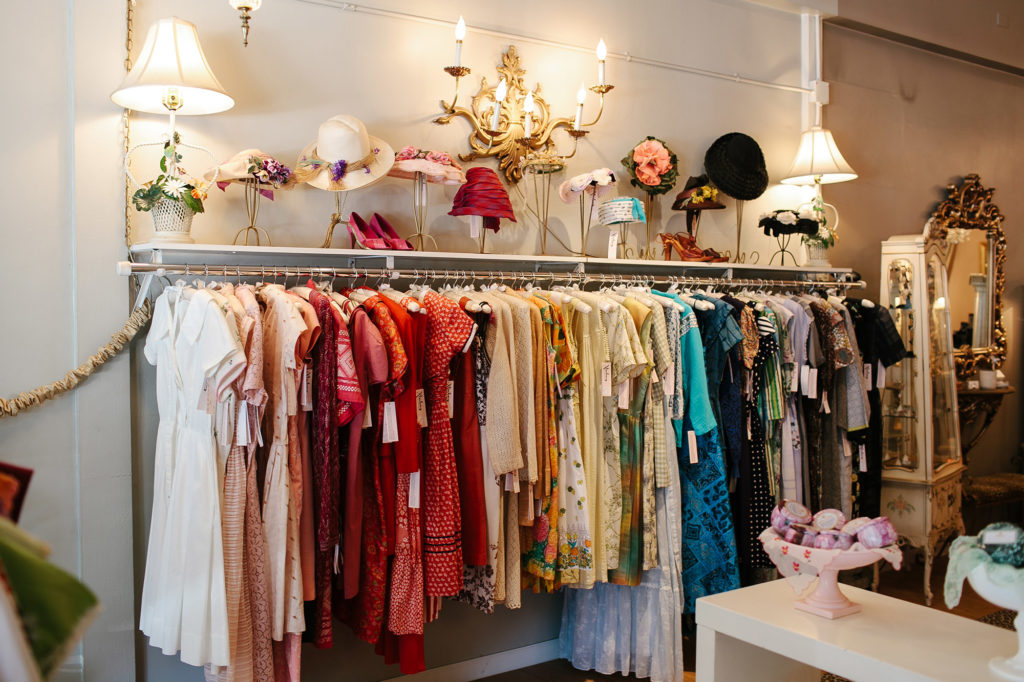
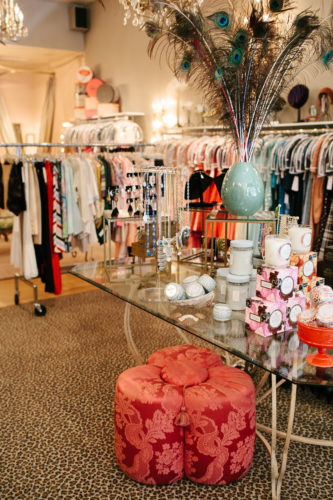
Liz began selling her finds to local vintage stores until she met the woman who would become her first business partner, the owner of a tiny boutique called Lush Budget who spotted her carrying a load of vintage rejects outside of a nearby store. The pair hit it off, and eventually moved from that store to a larger one called Lady Luck. Here, Liz had her first taste of success. The business not only proved to be lucrative, but was written up in publications such as Vogue. As the business grew, so did her collection of clothing.
When the partnership broke up, Liz opened Xtabay. In the beginning, Xtabay sold a wide range of vintage clothing. "When I first opened, we sold everything from levis to rock t-shirts to evening gowns. Our clientele was really mixed. We had a lot of weird guys lurking around in the beginning." Over time, that focus has shifted. The shop now specializes in special occasion garments, including astoundingly beautiful vintage cocktail and party dresses. Xtabay is now the go-to shop in Portland for exquisite vintage clothing. In 2012, they opened a bridal salon, a beautiful space above the main shop that specializes in vintage and antique wedding gowns.
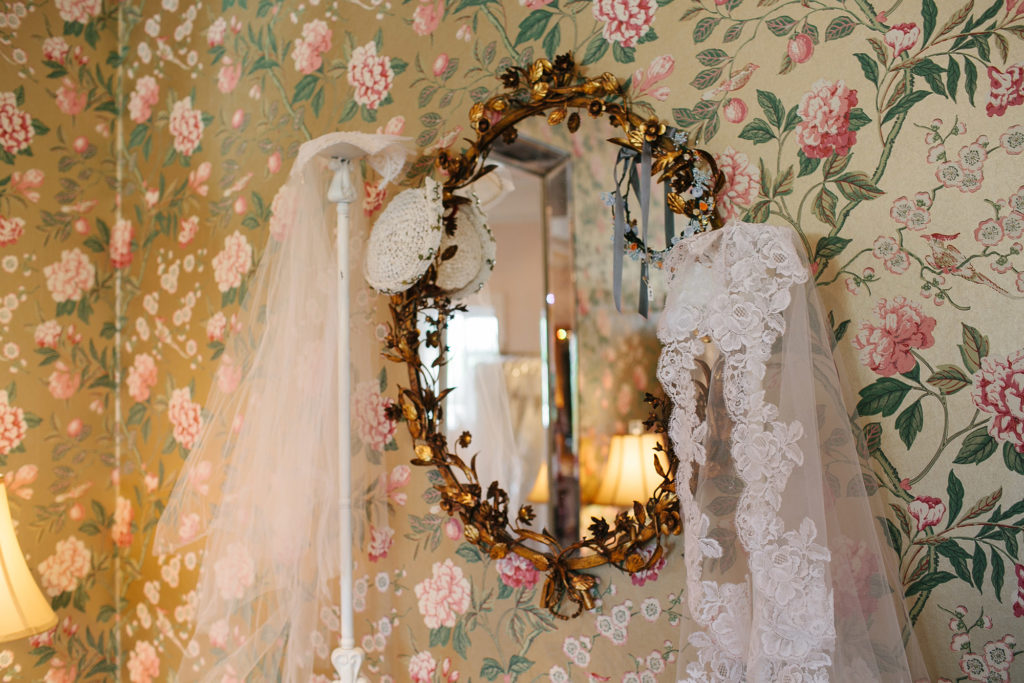
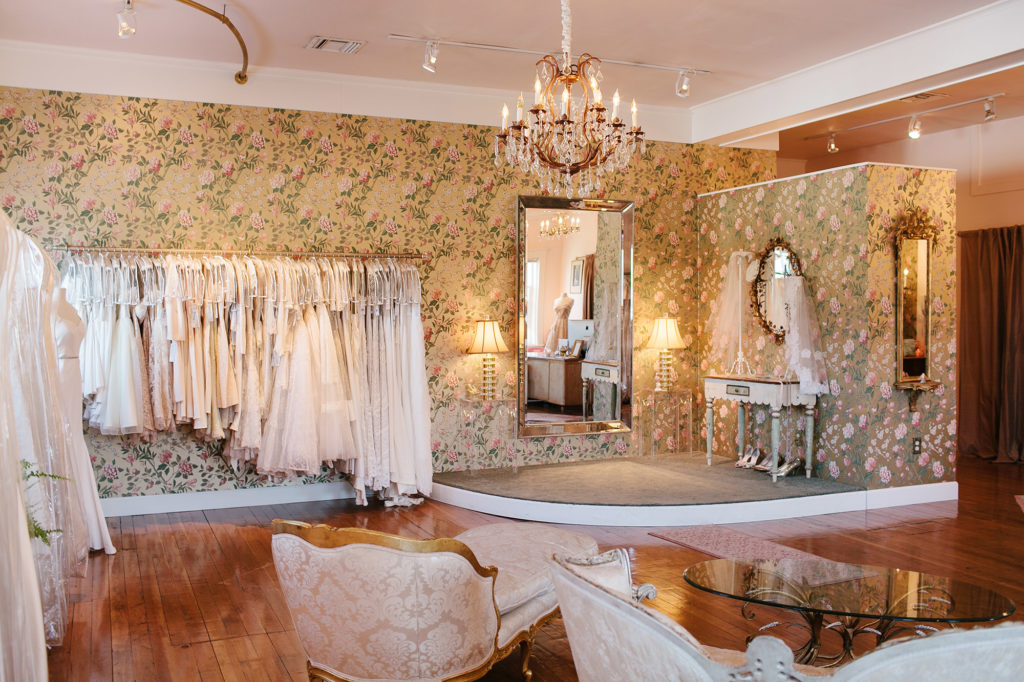
The bridal salon at Xtabay
Over the years, Liz has learned many lessons about buying, collecting, and caring for vintage clothing. You can apply these same lessons, whether you are a collector, someone who likes to mix in vintage here and there, or even just a sewist looking to shop for inspiration.
Wearing Vintage Today
When buying pieces for Xtabay, Liz looks for three things: design, quality and relevancy. These are the same criteria you can use while shopping to help guide your own purchases, whether you're looking for the perfect 1950s wedding gown, or even perusing the racks at a modern boutique.
Design
In some ways, evaluating design is subjective. Each of us has personal preferences about what we consider "good design," and those preferences are what form our individual tastes.
Yet, there are some principles of design that remain universal, and you can train your eye to find them. Look for garments with pleasing proportions that flatter the body, particularly your own body type. Keep an eye on the fit, paying particular attention to any areas where the piece is straining or bunching. Persistent wrinkles in certain areas are the hallmarks of a poor fit.
Because vintage clothing can often be so overwhelmingly pretty, it's helpful to set a few ground rules for yourself when shopping. Having a list in your mind of what works with your body and lifestyle before you shop can help you to avoid picking out beautiful dresses purely for their embellishments or prints.
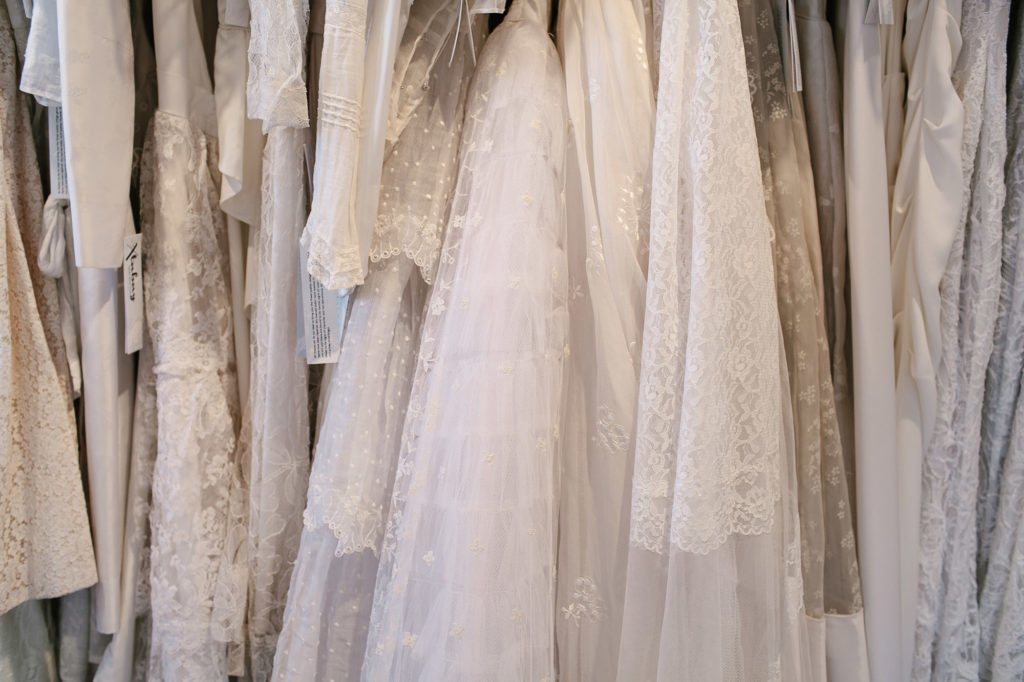
In addition to the overall look and fit, keep an eye out for interesting and unusual details. Vintage clothing often includes fascinating construction details that are left out of modern apparel, and can be a rich source of inspiration. Bias-cut panels, unusual closures, or shaped seams and darts are just a few of the luxurious touches you might notice once you start looking closely.
Quality
In some ways, the quality of a vintage garment is easy to deduce. If it's held up well over the years, the quality must be at a fairly high level. Most low quality garments from 40 or more years ago simply haven't made it this far. Compare that to a modern piece fresh from the factory. Who knows whether it will even survive the first wash?
The greater difficulty comes in deducing what can be fixed and what must be abandoned. In shopping for vintage, you must sometimes come to terms with the fact that certain pieces are injured beyond repair. In shopping for her store, Liz says, "Condition is very important, and a piece has to be wearable for me to want to deal with it. That means occasionally having to pass on some really incredible things. It breaks my heart sometimes."
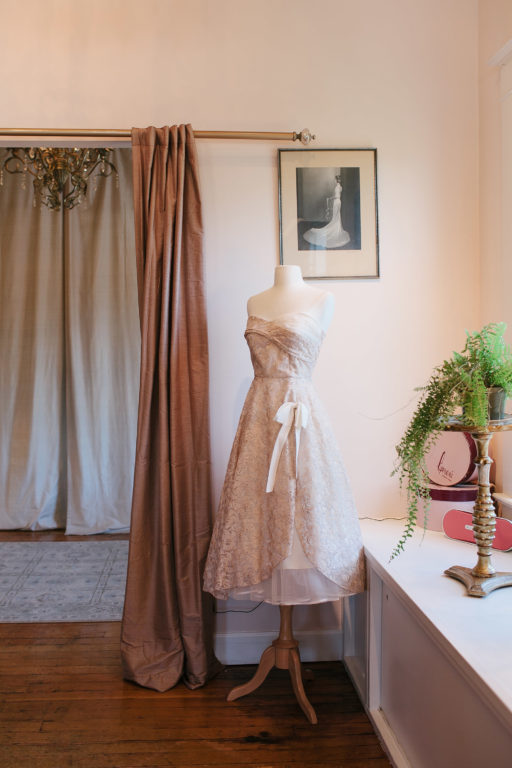
To evaluate the quality, take a look at the condition of the seams and fabric. If you notice splits or tears, think carefully about whether these flaws can be easily repaired, but also whether they will continue to crop up as the garment is worn. Also check closures, making sure that they work and don't need to be replaced. Look for markers of high quality, such as luxurious fabrics, linings where needed, perfect buttonholes, and patterns like stripes and plaids that match at the seams.
Take a particularly good look at the underarms of a vintage garment. Underarm sweat can wreak havoc on fabric, particularly if it isn't washed immediately. This can lead to areas of the garment that are not just discolored or smelly, but actually weak and fragile.
Relevancy
Finally, consider whether the garment is truly wearable. Though boutiques like Xtabay focus on gorgeous special occasion dresses, today many women enjoy wearing vintage every day by mixing it with modern pieces. Liz says that the majority of her clients prefer not to dress in head-to-toe vintage, but to weave vintage looks into their own style.
"They are like me in the sense that they love the ease and comfort of modern clothing but love to inject their look with some fabulous vintage pieces. I always wear vintage coats in the winter over my jeans and t-shirts. I wear vintage dresses in the summer with my heels from Nordstrom and my vintage jewelry. Vintage coats and dresses are my mainstay."
Consider how you might incorporate individual items of vintage with the clothing you already own, how it mixes with your personal style, and how often you anticipate wearing it. Many vintage items, such as coats, sweaters, jackets, and summer dresses, are such classics that they will never go out of style and are easy to fit into the modern wardrobe.
Vintage Trends
Buying and wearing vintage clothing is more popular than ever. But like all things fashion related, vintage clothing faces trends. What was popular five or ten years ago is no longer quite the hot ticket item.
Pop culture and the nostalgia it inspires plays a large role in these trends today. "A few years ago everything was Mad Men. We had a fantastic time selling Mad Men type dresses," Liz says. "That has slowed down considerably and now people seem more interested in really old things: Edwardian dresses, hand embroidered and crochet dresses."
"As time goes by, things get harder and harder to find. That means the price of things go up. A 1950’s Ceil Chapman dress that I sold for $125 in 2005 now goes for closer to $700-800. It has become more of a luxury item than a cheap alternative to something new."
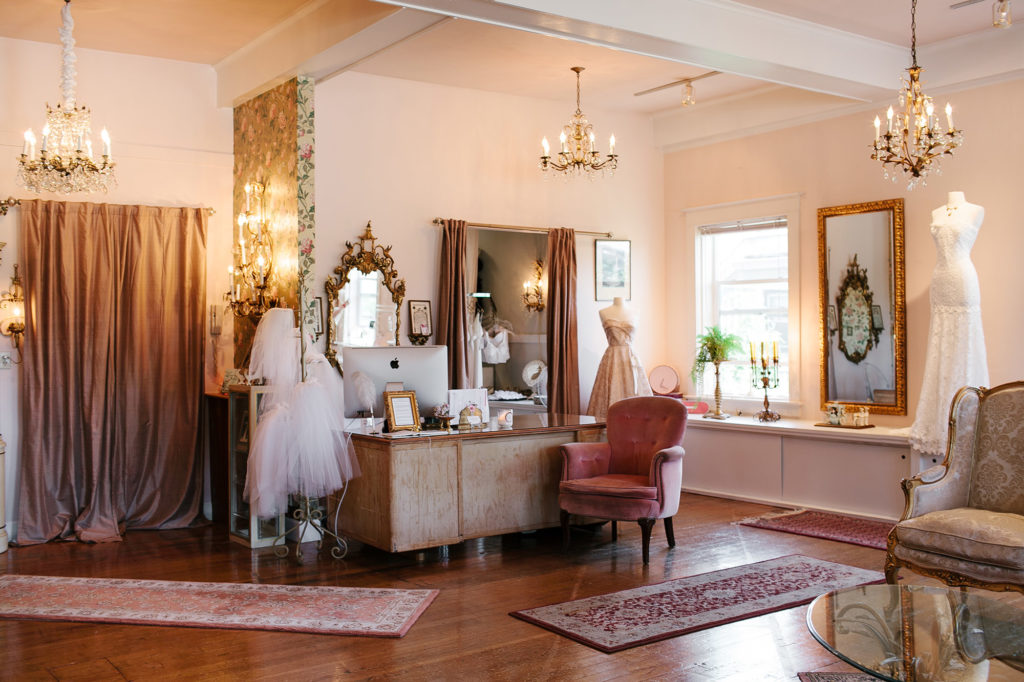
Currently, Liz notices that 1920s dresses are in high demand in the shop. With modern fashion trending towards loose silhouettes and gamine aesthetics, it's easy to picture dresses from this era fitting into a modern wardrobe.
Vintage Trends
- Embroidered tops
- Mexican dresses
- Edwardian dresses
- 1990s dresses
- Turquoise jewelry
- Ethnic clothing
- 1920s dresses
Caring for Vintage
There's no doubt that decades-old clothing requires special care and attention. Many older pieces are made in fabrics that are no longer manufactured, or that have mostly been replaced by easy-care synthetic alternatives.
Washing
Garments made in cotton or polyester are among the easiest to wash and treat, Liz says. These pieces can be hand or machine washed in the same way you would care for a modern piece of clothing.
Silks, rayons, and wools all need more attention. Most silks can be hand washed in warm water and do not require dry cleaning. Do not use harsh detergents and never apply chlorine bleach to silk, which will cause permanent damage. It's also important to treat wet silk gently. Do not ring or twist, and always blot rather than rub when spot treating.
Rayon can also be hand laundered, though it is more prone to shrinking or warping than silk. Rayon crepe is particularly susceptible, and should be dry cleaned to remain safe. In general, dry cleaning should be used as a last resort, as dry cleaning chemicals can be quite harsh. Liz advises to spot clean if necessary, rather than cleaning the entire garment.
Wool garments can be tricky to clean, and it's often best to consult with a professional dry cleaner to find the best method for your particular garment. If a wool garment is lined, this can also effect the choice of cleaning method. Wool sweaters and knits are generally fine to gently handwash in lukewarm water. Woven dresses, suits, and coats often need a professional cleaning. Again, spot cleaning is a good option for treating small spots or spills.
Wearing
Take care when wearing your vintage clothing. Preventing problems is much easier than treating them. "Be gentle, don’t exercise, do jumping jacks, or hurdle race in your vintage dress," Liz advises.
Use precautions to prevent the damage that can be done by sweat. While decades ago, anti-perspirants were not available and deoderants were less effective, today you can use these products to prevent further injury to these precious garments. "So many dresses get ruined by BO," Liz says. "God help me if we lose another beautiful gown to what we call a BO bandit!"
Storage
"Proper storage is crucial," says Liz. "Using padded hangers helps save the shoulders on dresses. Storing things in a canvas, breathable garment bag is smart. Do not store in plastic garment bags!" Plastic garment bags do not breathe, so odors, sweat, and damaging chemicals are trapped with your clothing. Canvas garment bags are widely available and some even have special features such as cedar to ward off bugs.
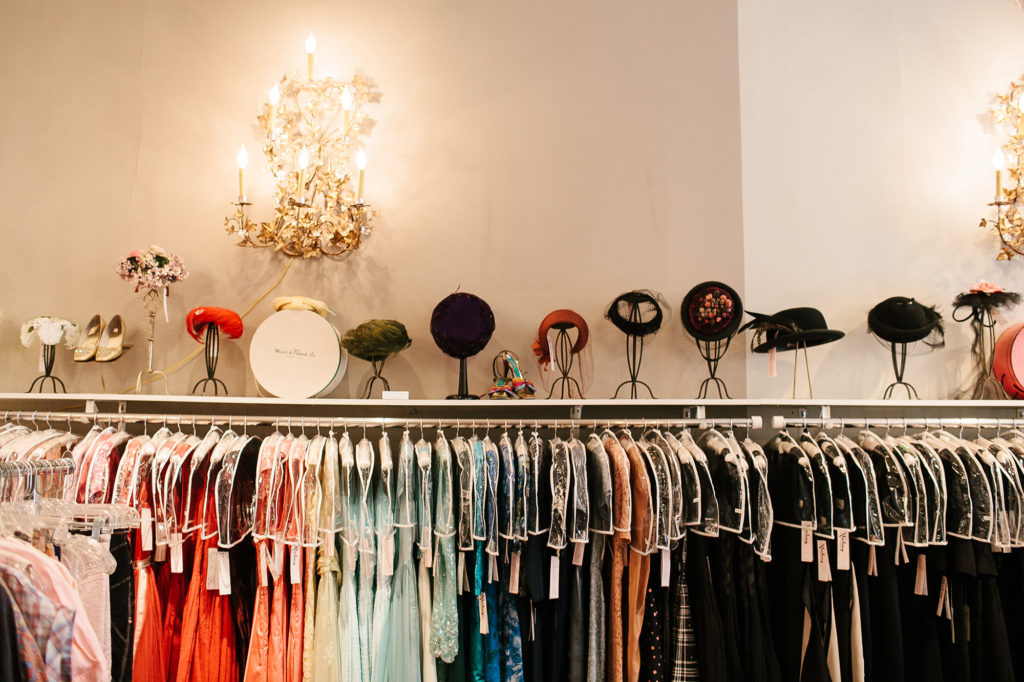
If you have a piece that needs extra special care, such as a delicate and very old silk dress or a piece made from lace, Liz advises that these delicate items should be wrapped in acid free tissue paper and kept in a cedar chest. Acid-free tissue can also be used to fold items to prevent creases, or it can be stuffed into items that should retain their shape, such as shoes or hats.
"Vintage clothing is made to last. If you care for it properly it is an investment that will last for years to come."
There is no doubt that a great deal of experience goes into collecting and caring for vintage pieces. But there's also a great deal of satisfaction to be found in the deep appreciation of clothing from the past. "I find the fabric, design, craftsmanship, and integrity of vintage clothing so much more compelling than a flimsy piece of microfiber from Target," Liz says. "There is a richness, a beauty and uniqueness in vintage clothing that I think speaks to a lot of women. It does to me."
Photography by Jade Sheldon-Burnsed, with the exception of the portrait of Elizabeth Gross.
